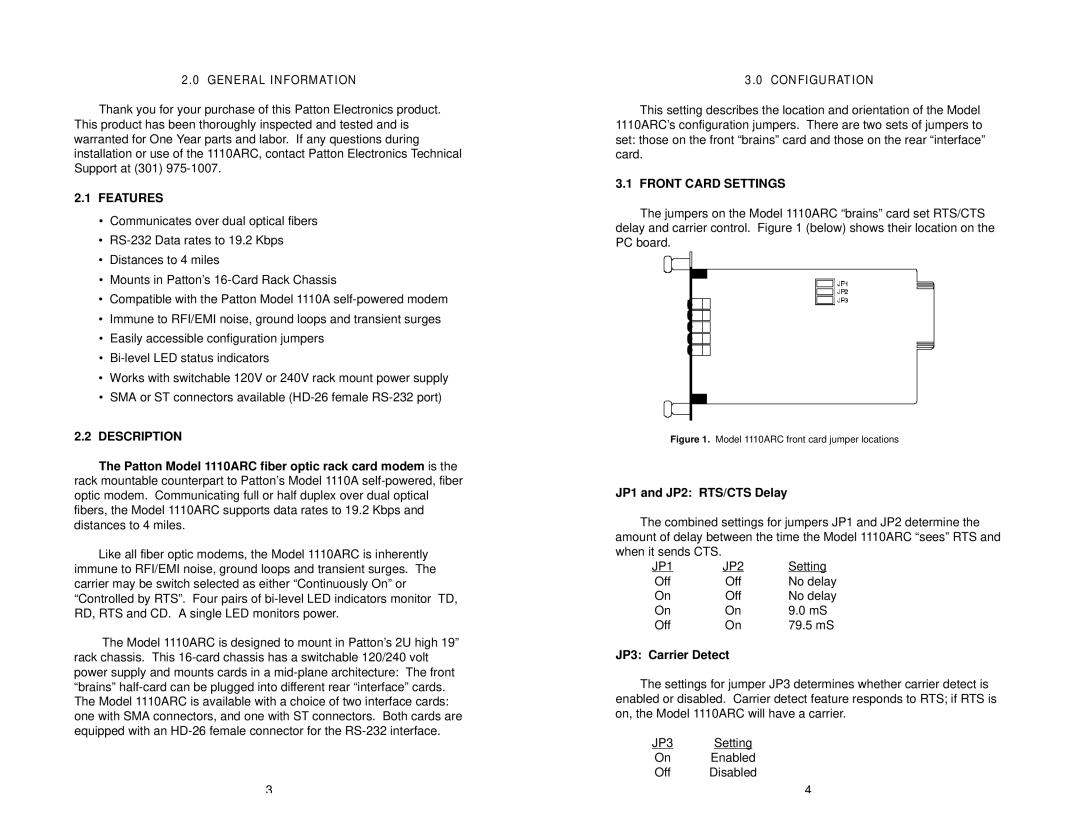
2.0 GENERAL INFORMATION
Thank you for your purchase of this Patton Electronics product. This product has been thoroughly inspected and tested and is warranted for One Year parts and labor. If any questions during installation or use of the 1110ARC, contact Patton Electronics Technical Support at (301)
2.1FEATURES
•Communicates over dual optical fibers
•
•Distances to 4 miles
•Mounts in Patton’s
•Compatible with the Patton Model 1110A
•Immune to RFI/EMI noise, ground loops and transient surges
•Easily accessible configuration jumpers
•
•Works with switchable 120V or 240V rack mount power supply
•SMA or ST connectors available
2.2DESCRIPTION
The Patton Model 1110ARC fiber optic rack card modem is the rack mountable counterpart to Patton’s Model 1110A
Like all fiber optic modems, the Model 1110ARC is inherently immune to RFI/EMI noise, ground loops and transient surges. The carrier may be switch selected as either “Continuously On” or “Controlled by RTS”. Four pairs of
The Model 1110ARC is designed to mount in Patton’s 2U high 19” rack chassis. This
3
3.0 CONFIGURATION
This setting describes the location and orientation of the Model 1110ARC’s configuration jumpers. There are two sets of jumpers to set: those on the front “brains” card and those on the rear “interface” card.
3.1 FRONT CARD SETTINGS
The jumpers on the Model 1110ARC “brains” card set RTS/CTS delay and carrier control. Figure 1 (below) shows their location on the PC board.
Figure 1. Model 1110ARC front card jumper locations
JP1 and JP2: RTS/CTS Delay
The combined settings for jumpers JP1 and JP2 determine the amount of delay between the time the Model 1110ARC “sees” RTS and
when it sends CTS. |
|
|
JP1 | JP2 | Setting |
Off | Off | No delay |
On | Off | No delay |
On | On | 9.0 mS |
Off | On | 79.5 mS |
JP3: Carrier Detect
The settings for jumper JP3 determines whether carrier detect is enabled or disabled. Carrier detect feature responds to RTS; if RTS is on, the Model 1110ARC will have a carrier.
JP3 | Setting |
On | Enabled |
Off | Disabled |
4
